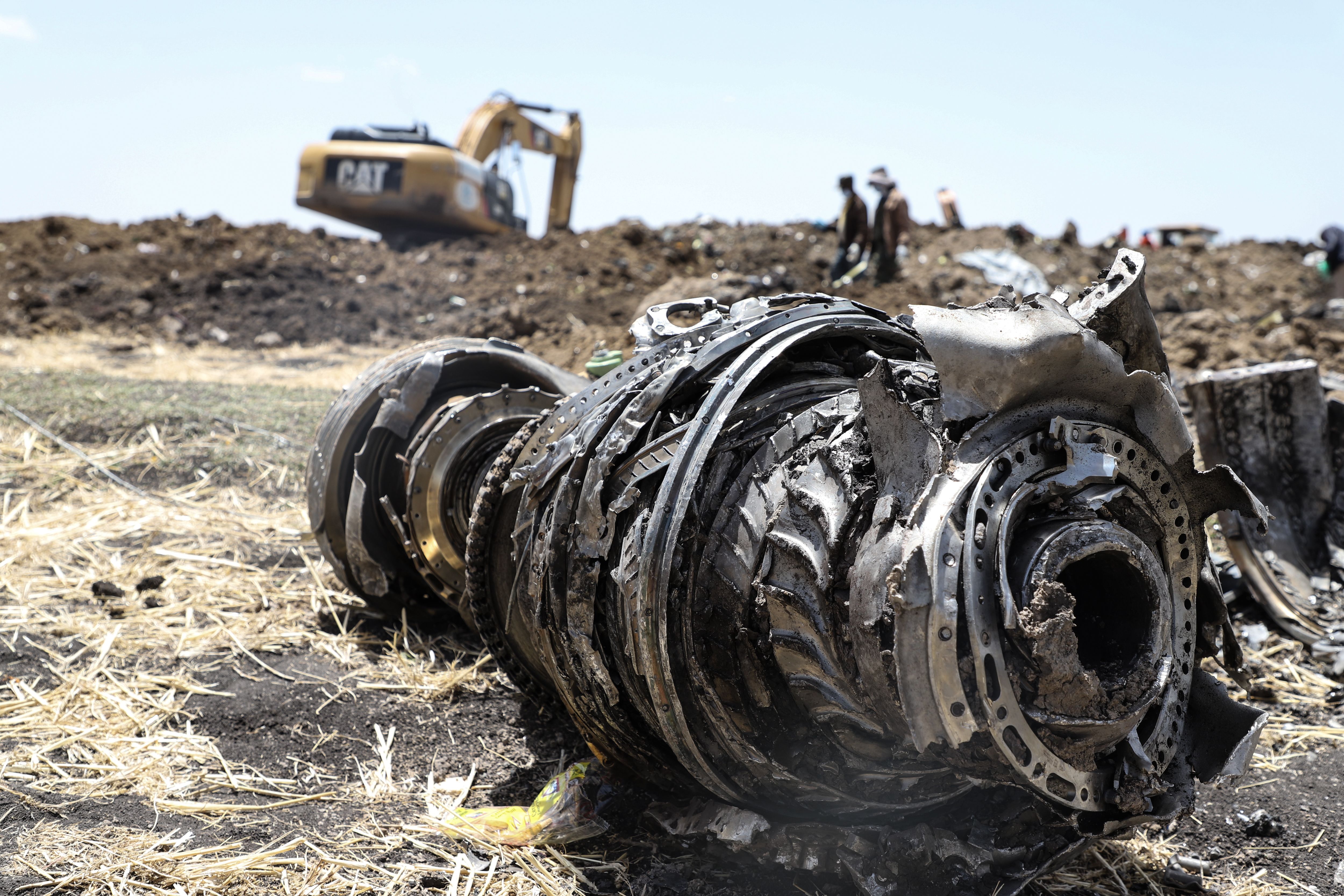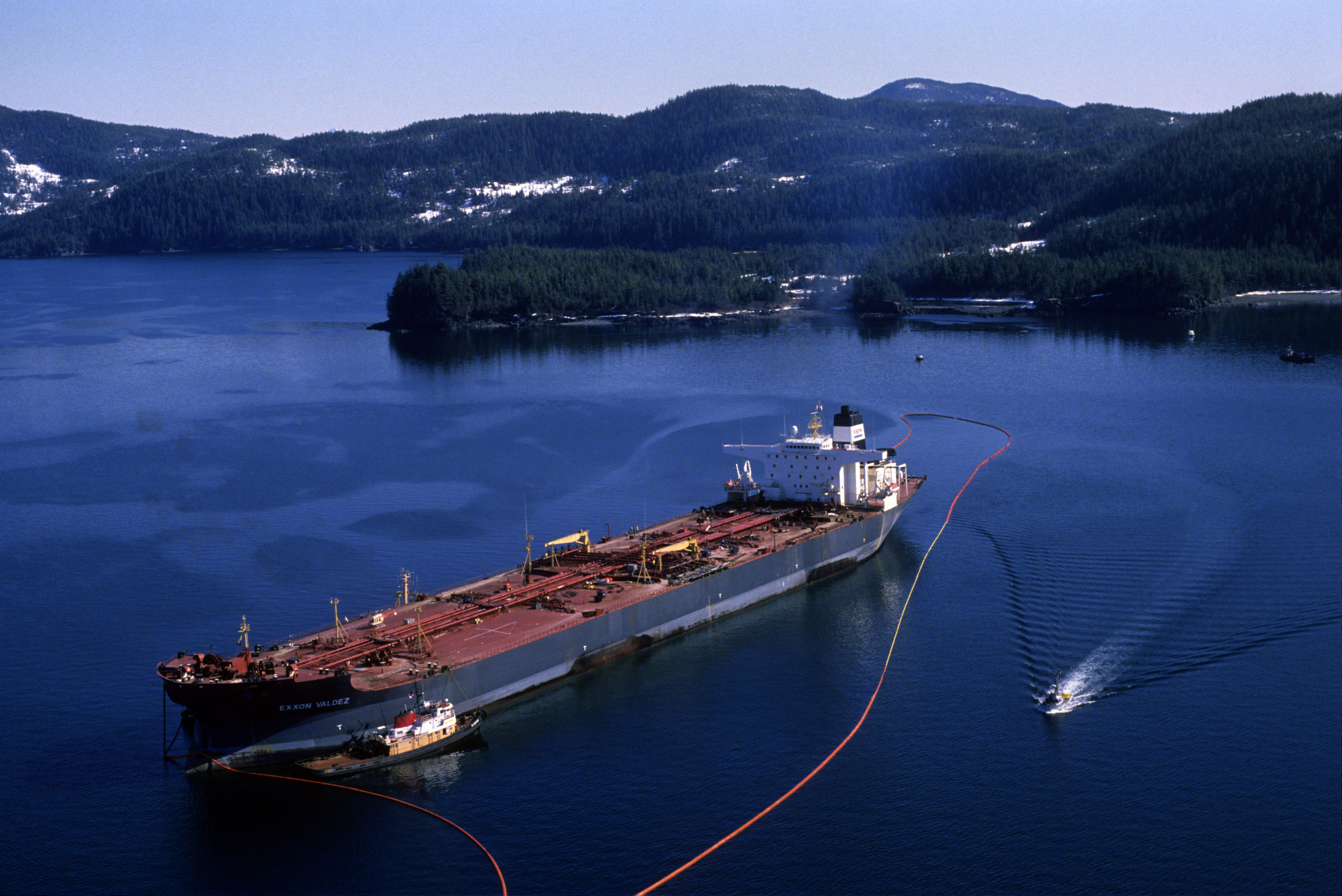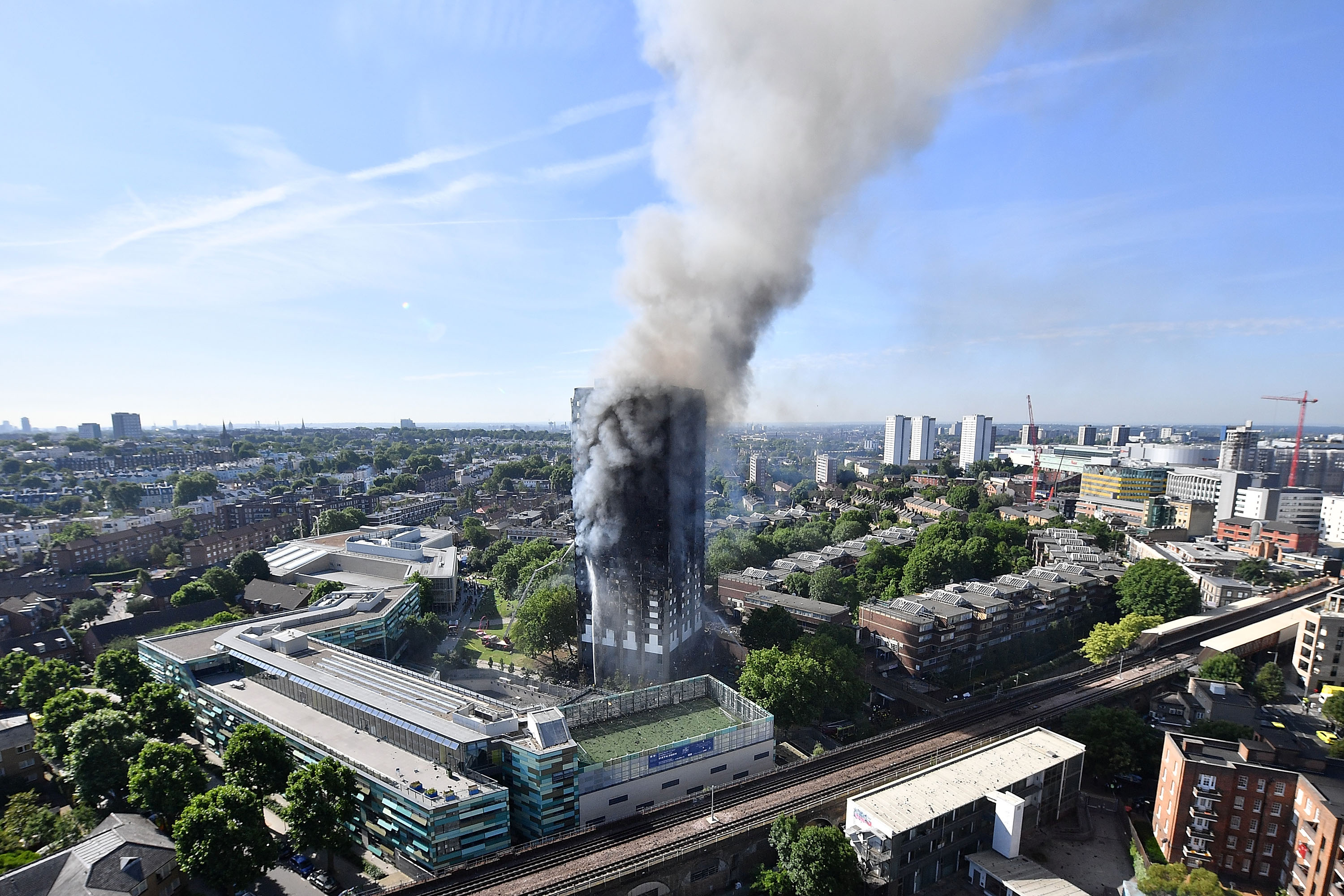Every time we step into a building, get on a plane, walk on a bridge, ride a train and do a million other mundane things, knowingly or unknowingly, we put our lives in the hands of the engineers.
But what happens when mistakes occur? National Geographic’s award winning documentary ‘Disasters Engineered’ looks at the devastating repercussions of engineering failures that cost lives and billions of dollars.
Rojak Daily spoke to the show’s producer Daniel Sharp to find out what’s in store for viewers in season two, what goes into making the show and more.

If you’ve ever watched even one episode of ‘Disasters Engineered’, you’d probably have noticed the many images and footage from news coverage and archives, as well as interviews with experts, investigators, witnesses and family members used to stitch together a comprehensive narrative of what happened during the disasters featured in an episode.
If you’re someone who pays attention to how stories are told on screen, you may have also noticed that the show does not use graphics to tell the stories, which was an intentional decision by the makers of the documentary.
“(This) is so that people are able to actually see what really happened rather than any reconstructions or graphics and things like that. We use graphics to explain the technology and engineering, the science behind it but for the most part we are careful to really work to find that footage, so that people can really get the sense of what we’re talking about, and the era and time as well,” Sharp explained.
His team has dedicated staff who tirelessly go through hours of footage, photos and films from the moment the show was being discussed till the last day of shoot.
Sharp shared that usually there is a group of material that comes up quickly but as the show goes on, more information may be obtained that makes it necessary for the team to look for more materials.
“Maybe you’re talking to a survivor or someone whose family was there, that sort of thing, and they tell you, three weeks later, there was a press conference. Then you go back to the archive and pull the footage and prepare it.
“As you speak to more people and learn more in depth about the disaster, we get new leads. It carries on and on until the very last minute till we finish the episode,” he said.
He added that sometimes people they interview will also share photographs and such which adds to the materials as well..jpg)
How did the idea for ‘Disasters Engineered’ and the format of using archived materials come about?
According to Sharp, it all started when the team met with some people who ran Getty image.
(For those who don’t know, Getty image is one of the biggest visual media companies that provides stock images, editorial photography, videos and things like that.)
Talking to the folks at Getty image and looking at their large database which included images and footage of important events, the team saw the possibilities of using the archived materials to help viewers to really understand the time and place.
“We’ve always been interested in engineering and have done projects with Cambridge University and the engineering staff there. So, we kind of knew we could get access to the experts and interesting people who could sort of get the story behind the event,” Sharpe said, adding that the series was built from there.

One of the biggest challenges production teams all over the world have been facing is the pandemic. Covid-19 has made it next to impossible to travel, meet people, and collaborate — things that are crucial for a successful production.
“During the first season, there was no Covid. We spent four weeks in the US, travelled to England and Ireland… we had some remote guys in Australia and New Zealand but it was the same people who would do all these things.
“What really changed this time was, Covid was new. We were still figuring out what was possible, what was allowed and it’s different in every country,” Sharp said.
The team had to hire local crews to do much of the work and had to send the “right type of people” as the topic covered was sensitive and needed compassion, patience and other qualities.
“We’ve done many more shows since Covid, but this was the show, as a company, we were learning how to produce content during a pandemic. It being a sensitive subject added a layer of complexity,” Sharp shared.
The challenges turned out to be a blessing in some ways as the team learnt how to do things in new ways. Sharpe said that they know how to find and brief local crew, which can cut down future travels.
They also had to learn to do post-production, editing and other technicalities that go into TV production remotely and decentralise the process.
“Some of our editors have wanted to move to the countryside or back to their home countries, things like that. We have someone in Italy and now we know how to deal with it. We might have gotten there eventually but this definitely accelerated the process,” Sharp said.
Taking a close look at dozens of engineering disasters has given Sharp the kind of insight few have. We asked him what’s the one thing that he’s learnt from producing the show that he could share.
“I would say one of the most interesting things that the engineers talk about is this concept of resilience. And it's sort of a new buzzword in engineering.
“It’s this idea of — if you’re building a skyscraper in an earthquake area, don’t just look at the thing that will protect you against earthquakes and ignore everything beyond that, which seems to be the way engineering projects have been done in the past.
“Resilience is this concept where, rather than prep for one thing, prep, just generally, to make a more resilient, stronger, safer building city infrastructure, or whatever it is you’re building,” Sharpe said.
He shared an anecdote that helped him understand the concept. If a city is being built and a water system is needed, instead of building one large pipe, three smaller pipes that go through different routes should be built. The cost may be more but if something like an earthquake, fire or other disasters were to strike, the entire system does not collapse.
Sharp said that in a lot of the cases they’ve looked at, one of the recurring patterns was that engineers focus so much on solving one problem, that they fail to look at other possible issues.
Giving the Fukushima disaster as an example, he explained how the engineers built huge sea walls to keep the nuclear plant safe from the effects of tsunami and left it at that. The engineers failed to see what placing diesel generators in the basement could result in, an oversight that caused devastating loss.
Disasters Engineered S2 premiered on Mon, 10 Jan 2022, 9PM on National Geographic with the first episode in the series, Fearsome Flights. (ASTRO: CH 551 (HD)).
Catch the latest episodes at the same time, same day every week!
All images are courtesy of National Geographic
But what happens when mistakes occur? National Geographic’s award winning documentary ‘Disasters Engineered’ looks at the devastating repercussions of engineering failures that cost lives and billions of dollars.
Rojak Daily spoke to the show’s producer Daniel Sharp to find out what’s in store for viewers in season two, what goes into making the show and more.
Hours of research, interviews and putting things together

If you’ve ever watched even one episode of ‘Disasters Engineered’, you’d probably have noticed the many images and footage from news coverage and archives, as well as interviews with experts, investigators, witnesses and family members used to stitch together a comprehensive narrative of what happened during the disasters featured in an episode.
If you’re someone who pays attention to how stories are told on screen, you may have also noticed that the show does not use graphics to tell the stories, which was an intentional decision by the makers of the documentary.
“(This) is so that people are able to actually see what really happened rather than any reconstructions or graphics and things like that. We use graphics to explain the technology and engineering, the science behind it but for the most part we are careful to really work to find that footage, so that people can really get the sense of what we’re talking about, and the era and time as well,” Sharp explained.
His team has dedicated staff who tirelessly go through hours of footage, photos and films from the moment the show was being discussed till the last day of shoot.
Sharp shared that usually there is a group of material that comes up quickly but as the show goes on, more information may be obtained that makes it necessary for the team to look for more materials.
“Maybe you’re talking to a survivor or someone whose family was there, that sort of thing, and they tell you, three weeks later, there was a press conference. Then you go back to the archive and pull the footage and prepare it.
“As you speak to more people and learn more in depth about the disaster, we get new leads. It carries on and on until the very last minute till we finish the episode,” he said.
He added that sometimes people they interview will also share photographs and such which adds to the materials as well.
An idea born out of a collaboration
.jpg)
How did the idea for ‘Disasters Engineered’ and the format of using archived materials come about?
According to Sharp, it all started when the team met with some people who ran Getty image.
(For those who don’t know, Getty image is one of the biggest visual media companies that provides stock images, editorial photography, videos and things like that.)
Talking to the folks at Getty image and looking at their large database which included images and footage of important events, the team saw the possibilities of using the archived materials to help viewers to really understand the time and place.
“We’ve always been interested in engineering and have done projects with Cambridge University and the engineering staff there. So, we kind of knew we could get access to the experts and interesting people who could sort of get the story behind the event,” Sharpe said, adding that the series was built from there.
Filming during a pandemic

One of the biggest challenges production teams all over the world have been facing is the pandemic. Covid-19 has made it next to impossible to travel, meet people, and collaborate — things that are crucial for a successful production.
“During the first season, there was no Covid. We spent four weeks in the US, travelled to England and Ireland… we had some remote guys in Australia and New Zealand but it was the same people who would do all these things.
“What really changed this time was, Covid was new. We were still figuring out what was possible, what was allowed and it’s different in every country,” Sharp said.
The team had to hire local crews to do much of the work and had to send the “right type of people” as the topic covered was sensitive and needed compassion, patience and other qualities.
“We’ve done many more shows since Covid, but this was the show, as a company, we were learning how to produce content during a pandemic. It being a sensitive subject added a layer of complexity,” Sharp shared.
The challenges turned out to be a blessing in some ways as the team learnt how to do things in new ways. Sharpe said that they know how to find and brief local crew, which can cut down future travels.
They also had to learn to do post-production, editing and other technicalities that go into TV production remotely and decentralise the process.
“Some of our editors have wanted to move to the countryside or back to their home countries, things like that. We have someone in Italy and now we know how to deal with it. We might have gotten there eventually but this definitely accelerated the process,” Sharp said.
The buzzword is “resilience”

Taking a close look at dozens of engineering disasters has given Sharp the kind of insight few have. We asked him what’s the one thing that he’s learnt from producing the show that he could share.
“I would say one of the most interesting things that the engineers talk about is this concept of resilience. And it's sort of a new buzzword in engineering.
“It’s this idea of — if you’re building a skyscraper in an earthquake area, don’t just look at the thing that will protect you against earthquakes and ignore everything beyond that, which seems to be the way engineering projects have been done in the past.
“Resilience is this concept where, rather than prep for one thing, prep, just generally, to make a more resilient, stronger, safer building city infrastructure, or whatever it is you’re building,” Sharpe said.
He shared an anecdote that helped him understand the concept. If a city is being built and a water system is needed, instead of building one large pipe, three smaller pipes that go through different routes should be built. The cost may be more but if something like an earthquake, fire or other disasters were to strike, the entire system does not collapse.
Sharp said that in a lot of the cases they’ve looked at, one of the recurring patterns was that engineers focus so much on solving one problem, that they fail to look at other possible issues.
Giving the Fukushima disaster as an example, he explained how the engineers built huge sea walls to keep the nuclear plant safe from the effects of tsunami and left it at that. The engineers failed to see what placing diesel generators in the basement could result in, an oversight that caused devastating loss.
Watch it on National Geographic channel
Disasters Engineered S2 premiered on Mon, 10 Jan 2022, 9PM on National Geographic with the first episode in the series, Fearsome Flights. (ASTRO: CH 551 (HD)).
Catch the latest episodes at the same time, same day every week!
All images are courtesy of National Geographic






